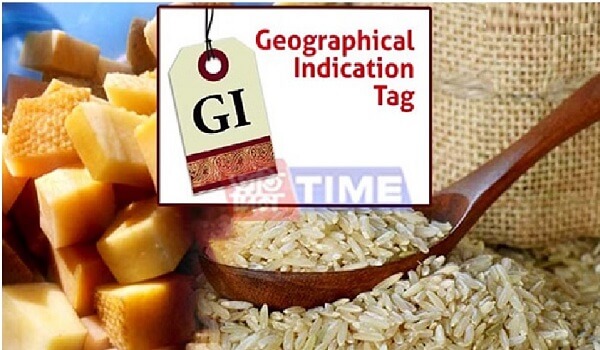Arunachal Pradesh has recently received the Geographical Indication (GI) tag for Arunachal Yak Churpi, Khaw Tai (Khamti rice), and Tangsa textile.
GI Tag
- A geographical indication (GI) tag is a name or sign used on certain products that correspond to a specific geographical location or origin.
- For example, Darjeeling Tea, Kanchipuram Silk, etc.
- Geographical indications are recognized as a part of intellectual property rights (IPRs) under Articles 1(2) and 10 of the Paris Convention and also under Articles 22 to 24 of the Trade Related Aspects of Intellectual Property Rights (TRIPS) Agreement
- India, as a World Trade Organisation (WTO) member, implemented the Geographical Indications of Goods Act, 1999, which became effective on September 15, 2003, to protect such indications.
- A registered GI is valid for 10 years. It can be renewed from time to time for a further period of 10 years each.
Arunachal Yak Churpi
- Origin: Arunachal Yak Churpi is derived from the milk of the Arunachali yak, a rare breed found primarily in the West Kameng and Tawang districts of Arunachal Pradesh.
- Tribal Yak Pastoralists: This milk is obtained from yaks reared by Brokpas, a tribal community known for their expertise in yak husbandry.
- These pastoralists practice seasonal migration, taking their yaks to higher altitudes during summers and descending to mid-altitude mountainous regions in winters, as yaks cannot survive at lower altitudes during summer.
- Health Benefits and Usage: Churpi is rich in proteins and serves as a vital source of nutrition in the vegetation-scarce, cold, and hilly mountainous regions of Arunachal Pradesh.
Khaw Tai (Khamti Rice)
- Khaw Tai, a chewy sticky rice variety, hails from the Namsai region and is cultivated by traditional Khampti tribal farmers.
Tangsa Textile
- The Tangsa Textile products crafted by the Tangsa tribe of Changlang district are renowned for their exotic designs and vibrant colors.
- This traditional craftsmanship reflects the cultural richness of the region.

